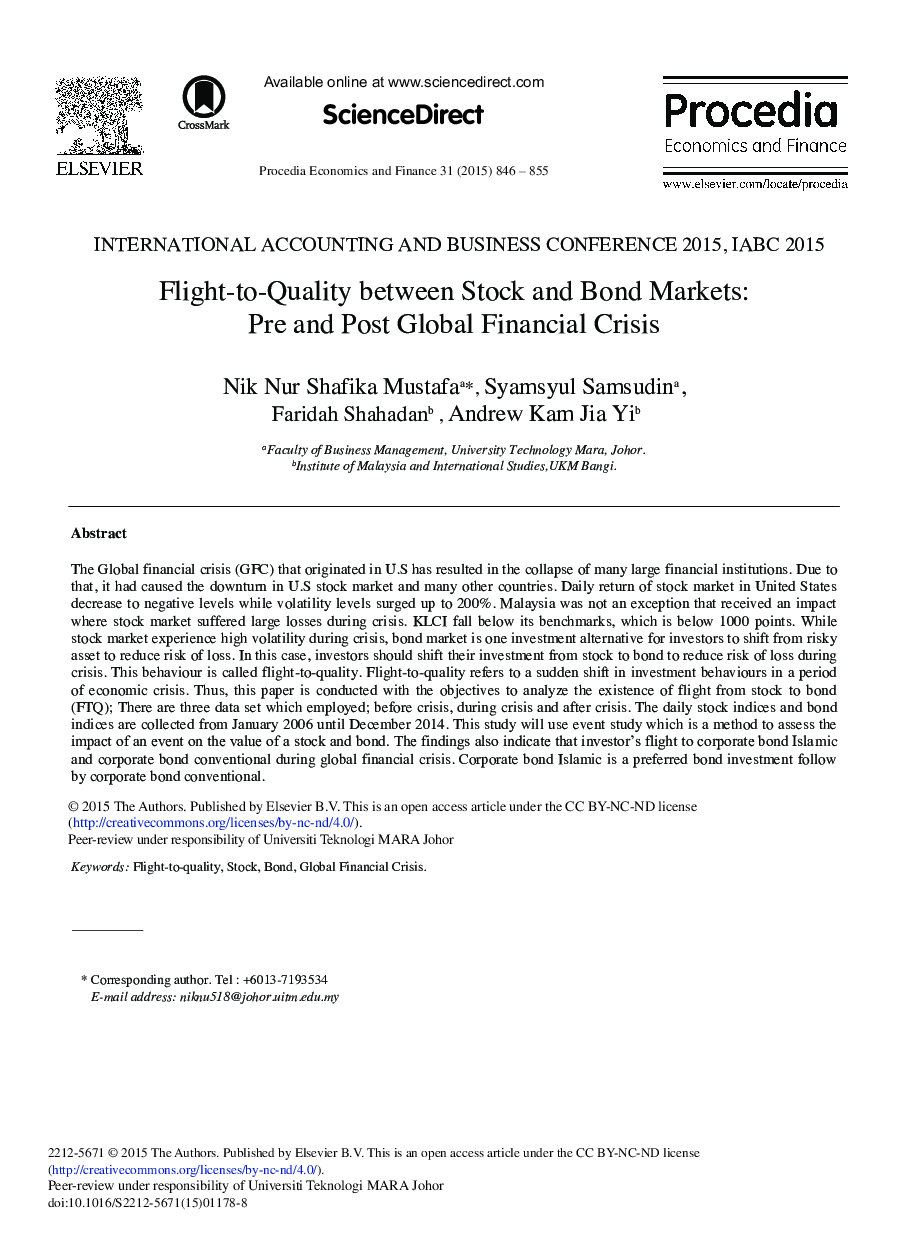| کد مقاله | کد نشریه | سال انتشار | مقاله انگلیسی | نسخه تمام متن |
|---|---|---|---|---|
| 982711 | 1480370 | 2015 | 10 صفحه PDF | دانلود رایگان |
The Global financial crisis (GFC) that originated in U.S has resulted in the collapse of many large financial institutions. Due to that, it had caused the downturn in U.S stock market and many other countries. Daily return of stock market in United States decrease to negative levels while volatility levels surged up to 200%. Malaysia was not an exception that received an impact where stock market suffered large losses during crisis. KLCI fall below its benchmarks, which is below 1000 points. While stock market experience high volatility during crisis, bond market is one investment alternative for investors to shift from risky asset to reduce risk of loss. In this case, investors should shift their investment from stock to bond to reduce risk of loss during crisis. This behaviour is called flight-to-quality. Flight-to-quality refers to a sudden shift in investment behaviours in a period of economic crisis. Thus, this paper is conducted with the objectives to analyze the existence of flight from stock to bond (FTQ); There are three data set which employed; before crisis, during crisis and after crisis. The daily stock indices and bond indices are collected from January 2006 until December 2014. This study will use event study which is a method to assess the impact of an event on the value of a stock and bond. The findings also indicate that investor's flight to corporate bond Islamic and corporate bond conventional during global financial crisis. Corporate bond Islamic is a preferred bond investment follow by corporate bond conventional.
Journal: Procedia Economics and Finance - Volume 31, 2015, Pages 846-855
